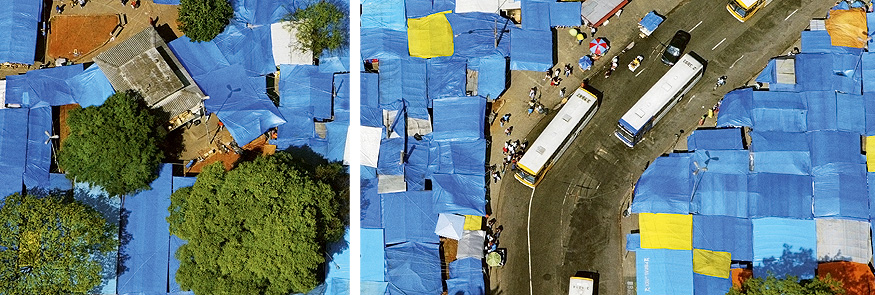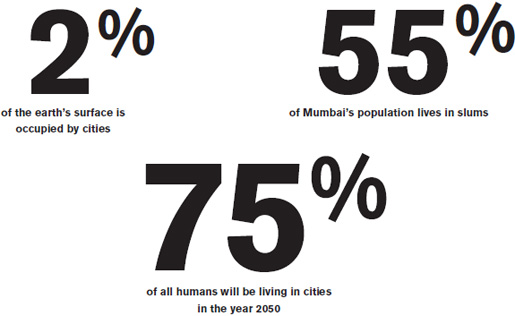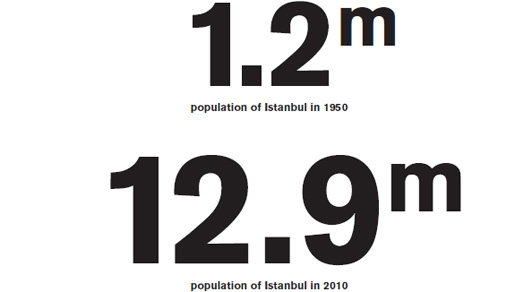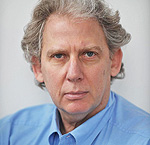Eradicating social exclusion with thoughtful urban design
Cities are natural areas of economic opportunity which, when properly fostered, result in social inclusion and mobility.

1
The city of the future is facing major social challenges. Demographic change, the pluralization of cultures and lifestyles, and a growing social inequality manifested through spatial fragmentation are transforming urban society from the ground up – and in ways that often ignore a key ingredient for successful urban life: social inclusion.
by Ricky Burdett
THE TRUE importance of the ongoing transformation of urban society becomes clear when one considers that half of the world’s seven billion people live in an urban environment. By 2050, when the world’s population is predicted to peak at nine billion, it’s expected that 75 percent of all humans will live in cities. Already today, the population of cities such as Lagos, Delhi, and Dhaka is growing by over 300,000 a year. In addition to having a profound impact on the planet’s ecological balance, the form that this new wave of urban construction takes will shape the living conditions for billions of people growing up and growing old in cities.
Cities by practical definition are magnets for diversity. They are natural areas of economic opportunity, which when properly fostered, result in social inclusion and mobility – two necessary factors in a healthy urban landscape and society at large. When functioning properly, the city is a machine of sorts that allows people to enrich their lot in life through improved access to education, health care, business, and networking. At their best, cities provide and nurture a civic space that encourages all of these desirable things to happen.
The cost of segregation
Unfortunately, when one travels around the rapidly urbanizing regions of the world in Africa, in Asia, and in Latin America, and visits the centers and the outskirts of cities such as Johannesburg, Lima, New Delhi, or Dakar, one sees examples of increasing exclusivity, with people of one type segregated from people of another. At one end, there is a growing landscape of secluded communities for the wealthy, on the other social housing estates and slums for those at the bottom of the ladder. This is a pattern that is repeating itself across national and cultural boundaries.

Governments, public agencies, and the private sector are driving change to improve the living conditions of existing and new city-dwellers. Unfortunately, in most instances this “change” is sadly outmoded. In Istanbul, for instance, the government is building three million housing units over 20 years, but the rows of bland, 20-story towers surrounded by tarmac are reminiscent of the alienating social housing projects built across Europe and the United States in the mid-twentieth century. They may fulfill a basic human need – shelter – but they are dehumanizing at the same time. Rather than representing a promising trend in inclusivity, they are essentially an alienating ghettoization of less fortunate populations.
As many Western cities are demolishing these impersonal and alienating housing developments due to their social dysfunctionality, these projects are gaining in popularity in many developing nations. Similarly, as many Western nations have grown to increasingly rely on a combination of cultural preservation, increased urban density, and efficient public transportation, developing nations continue to draw on our past mistakes rather than time-tested improvements. As Mumbai attempts to redevelop Dharavi, India’s largest slum, its efforts raise the specter of the 1960s “slum clearance” programs that devastated the social life and urban structure of so many European and American cities. Similarly disheartening is São Paulo’s continuous march toward endless sprawl, with four-hour commuting deemed acceptable in a city that welcomes about one thousand new cars to its streets every day.
In praise of density
These sorts of projects represent a very different trajectory from Baron Haussmann’s Paris or 19th-century London and New York, where people of very different backgrounds lived in relatively close proximity. Just as importantly, the different functions of everyday life – sleeping, going to school, shopping, or going to work – tended to be relatively close to each other. Greater proximity and greater density lead to exactly what cities are good at – mixing together people of different backgrounds. Dense, well-connected, and well-designed cities not only make good social sense; they also make good economic and environmental sense, as they are far more sustainable than sprawl. Suburbia leads to a disaggregation and a fragmentation of city life, which promotes exclusion, poor assimilation, and environmental waste through inherently poor public transportation across unnecessarily scattered destinations (hospitals, housing, schools, shopping, work, etc).
While there is no perfect one-size-fits-all remedy to promote integration and inclusivity in view of obvious cultural and demographic differences among the world’s cities, from an urban design and planning point of view, the well-connected “open city” – here life is lived “on the street” – is a very powerful design tool. If you look at the cities that feel open, accessible, and integrated, it will be because of some combination of these design ingredients, as well as a strong emphasis on public transportation.

Consider the streets of Barcelona, New York, or London: they are not especially similar to one another, but they do share certain key characteristics, such as pedestrian access and public and business utilization at ground level, i.e. retail shops, offices, and public promenades. One is able to walk freely from one urban area to another without having to cross boundaries or gates. These are the makings of an open and potentially democratic city. It is the encouragement of day-to-day social and transactional encounters between diverse groups of people that keeps society going. This is where an inclusive design of the city comes into play. The public spaces of cities – the squares, the parks, the alleyways, and the streets themselves – become the social glue that keeps society together.
Similarly, an open, inclusive city must have a reliable, affordable, and extensive public transportation network. It is precisely in the sorts of cities that are growing so rapidly in developing nations that people must have an open transport system to get to work, and by doing so better their family’s economic future. Public transportation is a critical element allowing everyone to partake in all the advantages urban life has to offer. And it doesn’t have to be luxurious – Bogotá’s TransMilenio is a simple system incorporating buses, but it’s well designed and very effective for moving people around a city of seven million.
Ultimately, cities can both brutalize and humanize people and the environment. Which way they go depends on governance and leadership. If you think of the success of Barcelona or Copenhagen or Rome, it’s because for hundreds of years there has always been purposeful investment in their public spaces. City leaders have an opportunity to make a difference, building on the spatial and social DNA of their cities, rather than importing generic models that cater to the homogenizing forces of globalization. A well-run and designed city represents the nexus of good planning, architecture and local politics. It takes cooperation amongst these disciplines to make real and fairly rapid change. Change at the local level, if inspired and persistent, is not only possible; it’s also quite probable. The rediscovery of the fragile thread that links physical order to human behavior will be the main task of enlightened leadership in a world where, for better or worse, 75 percent of us will soon be living in urban environments.

Ricky Burdett
is Professor of Urban Studies at the London School of Economics and co-editor, with Deyan Sudjic, of Living in the Endless City, recently published by Phaidon.
PHOTO: TUCA VIEIRA





